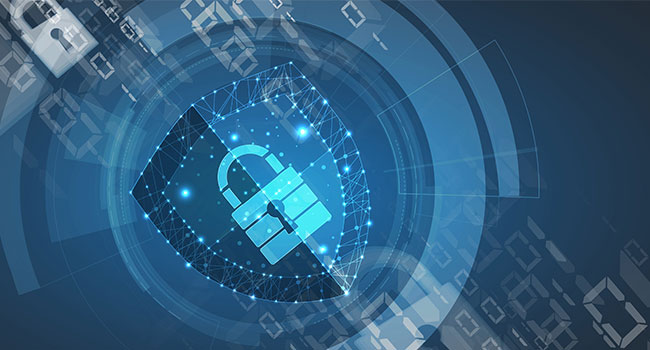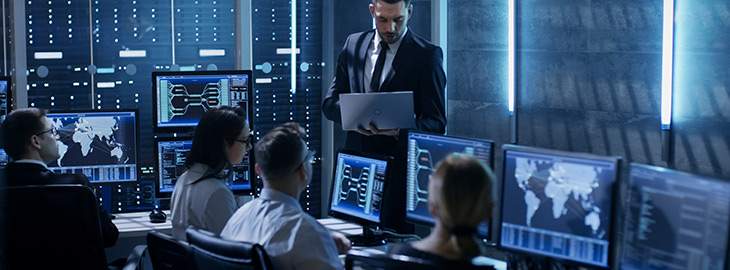Safeguarding Your Organization: Corporate Security Basics Unveiled
Safeguarding Your Organization: Corporate Security Basics Unveiled
Blog Article
From Cybersecurity to Physical Steps: Reinforcing Business Protection in an Altering Globe
By combining the staminas of both cybersecurity and physical protection, companies can produce a comprehensive protection approach that deals with the diverse range of dangers they face. In this conversation, we will discover the changing danger landscape, the need to integrate cybersecurity and physical security, the implementation of multi-factor verification steps, the significance of employee understanding and training, and the adjustment of protection procedures for remote labor forces. By analyzing these vital areas, we will gain useful insights into exactly how companies can strengthen their corporate safety and security in an ever-changing globe.
Comprehending the Changing Hazard Landscape
The progressing nature of the contemporary globe requires an extensive understanding of the altering danger landscape for efficient business security. It is important for companies to remain educated and adapt their safety measures to deal with these progressing dangers.
One key facet of recognizing the altering risk landscape is acknowledging the various kinds of dangers that organizations face. Cybercriminals are regularly developing brand-new techniques to exploit susceptabilities in computer systems and networks. These dangers can vary from malware and ransomware attacks to phishing scams and social engineering tactics. In addition, physical risks such as burglary, criminal damage, and company espionage continue to be widespread concerns for organizations.
Monitoring and examining the threat landscape is crucial in order to identify possible threats and susceptabilities. This includes staying updated on the current cybersecurity patterns, evaluating risk knowledge reports, and conducting routine danger assessments. By understanding the changing danger landscape, organizations can proactively execute suitable security steps to mitigate dangers and secure their properties, reputation, and stakeholders.
Integrating Cybersecurity and Physical Security
Incorporating cybersecurity and physical security is essential for comprehensive corporate defense in today's interconnected and digital landscape. As organizations significantly count on innovation and interconnected systems, the limits in between physical and cyber risks are becoming obscured. To successfully safeguard against these dangers, an alternative method that incorporates both cybersecurity and physical security measures is essential.
Cybersecurity concentrates on protecting electronic assets, such as systems, information, and networks, from unauthorized accessibility, interruption, and theft. Physical security, on the other hand, incorporates procedures to secure physical possessions, people, and facilities from vulnerabilities and risks. By incorporating these 2 domain names, organizations can attend to vulnerabilities and threats from both physical and digital angles, therefore boosting their total safety and security stance.
The integration of these two disciplines allows for an extra thorough understanding of safety and security risks and makes it possible for a unified action to incidents. For instance, physical gain access to controls can be boosted by incorporating them with cybersecurity procedures, such as two-factor verification or biometric identification. Cybersecurity measures can be enhanced by physical safety and security actions, such as security video cameras, alarm systems, and secure gain access to points.

Implementing Multi-Factor Authentication Procedures
As organizations significantly prioritize detailed safety measures, one effective approach is the implementation of multi-factor authentication actions. Multi-factor authentication (MFA) is a safety approach that needs individuals to give numerous types of recognition to access a system or application. This approach includes an additional layer of defense by integrating something the user knows, such as a password, with something they have, like a finger print or a protection token.
By executing MFA, organizations can dramatically enhance their safety stance - corporate security. Traditional password-based authentication has its constraints, as passwords can be easily compromised or failed to remember. MFA alleviates these risks by adding an extra verification factor, making it extra tough for unapproved people to access to delicate info
There are a number of sorts of multi-factor verification approaches available, consisting of biometric verification, SMS-based verification codes, and equipment symbols. Organizations need to evaluate their particular requirements and choose one of the most ideal MFA remedy for their demands.
However, the implementation of MFA ought to be carefully intended and executed. It is crucial to strike an equilibrium in between safety and functionality to stop individual aggravation and resistance. Organizations must also think about potential compatibility concerns and supply adequate training and assistance to ensure a smooth shift.
Enhancing Staff Member Awareness and Training
To enhance corporate protection, organizations should focus on improving worker understanding and training. In today's quickly evolving risk landscape, staff members play a critical role in protecting an organization's sensitive check these guys out information and properties. Regrettably, lots of safety and security breaches occur due to human mistake or lack of understanding. Therefore, organizations need to spend in comprehensive training programs to enlighten their staff members concerning potential dangers and the finest methods for mitigating them.
Reliable worker understanding and training programs ought to cover a large range of subjects, including information defense, phishing assaults, social design, password hygiene, and physical protection procedures. These programs must be customized to the check out this site specific needs and responsibilities of various staff member roles within the organization. Regular training sessions, workshops, and simulations can help workers create the necessary skills and expertise to react and identify to safety and security risks efficiently.
Furthermore, companies should urge a society of safety and security understanding and offer recurring updates and reminders to maintain workers informed regarding the most up to date threats and reduction methods. This can be done with internal communication channels, such as e-newsletters, intranet sites, and email campaigns. By promoting a security-conscious workforce, companies can dramatically decrease the probability of protection events and safeguard their useful assets from unapproved access or concession.

Adapting Security Measures for Remote Labor Force
Adjusting corporate safety and security measures to accommodate a remote labor force is crucial in making certain the protection of sensitive info and possessions (corporate security). With the enhancing fad of remote work, organizations need to implement ideal protection measures to reduce the risks related to this brand-new way of working
One essential facet of adapting safety and security steps for remote job is developing secure interaction networks. Encrypted messaging systems and virtual private networks (VPNs) can assist safeguard delicate info and protect against unauthorized gain access to. In addition, companies need to implement using solid passwords and multi-factor authentication to enhance the safety and security of remote access.
Another essential factor to consider is the application of protected remote access solutions. This involves supplying employees with protected access to corporate resources and information via virtual desktop computer infrastructure (VDI), remote desktop visit this site computer protocols (RDP), or cloud-based solutions. These modern technologies ensure that sensitive information stays secured while allowing staff members to execute their duties successfully.

Finally, comprehensive safety recognition training is vital for remote staff members. Training sessions ought to cover ideal practices for firmly accessing and managing sensitive information, determining and reporting phishing attempts, and maintaining the general cybersecurity hygiene.
Verdict
In verdict, as the hazard landscape continues to develop, it is crucial for organizations to enhance their protection determines both in the cyber and physical domain names. Incorporating cybersecurity and physical security, carrying out multi-factor authentication steps, and improving employee recognition and training are vital actions towards accomplishing durable company safety.
In this discussion, we will explore the transforming threat landscape, the requirement to integrate cybersecurity and physical safety, the application of multi-factor authentication procedures, the significance of employee awareness and training, and the adaptation of safety steps for remote workforces. Cybersecurity steps can be complemented by physical protection steps, such as surveillance video cameras, alarms, and safe access factors.
As companies significantly prioritize thorough security measures, one effective method is the application of multi-factor verification steps.In final thought, as the hazard landscape continues to evolve, it is essential for organizations to enhance their safety gauges both in the cyber and physical domains. Incorporating cybersecurity and physical protection, executing multi-factor authentication procedures, and boosting worker recognition and training are essential actions towards achieving robust corporate safety.
Report this page